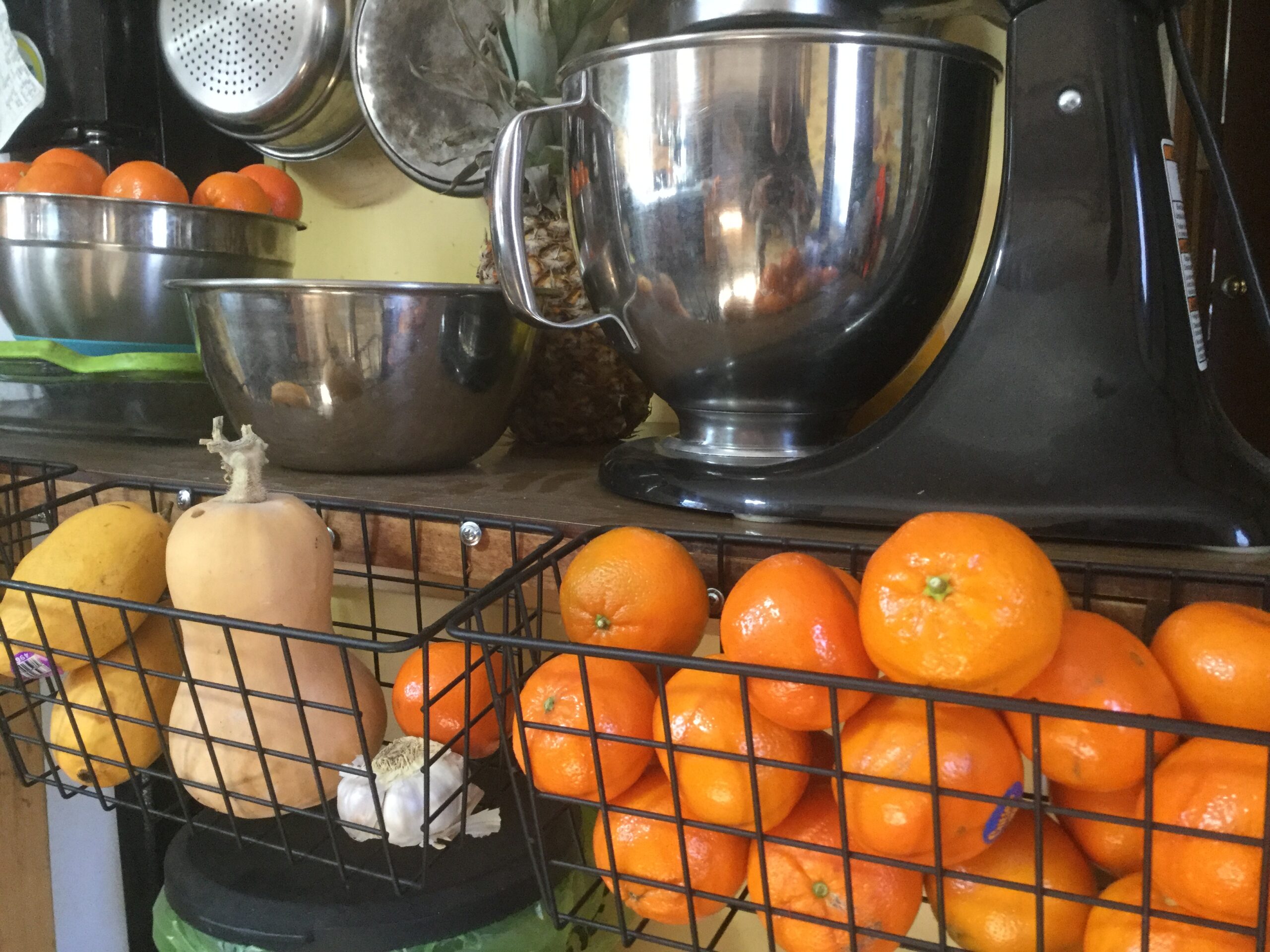
We needed some more fruit storage when our old hanging basket broke.
These metal baskets can be mounted on the edge of a kitchen counter or on a flat wall.
In addition, be sure to check out our older review posts.

We needed some more fruit storage when our old hanging basket broke.
These metal baskets can be mounted on the edge of a kitchen counter or on a flat wall.
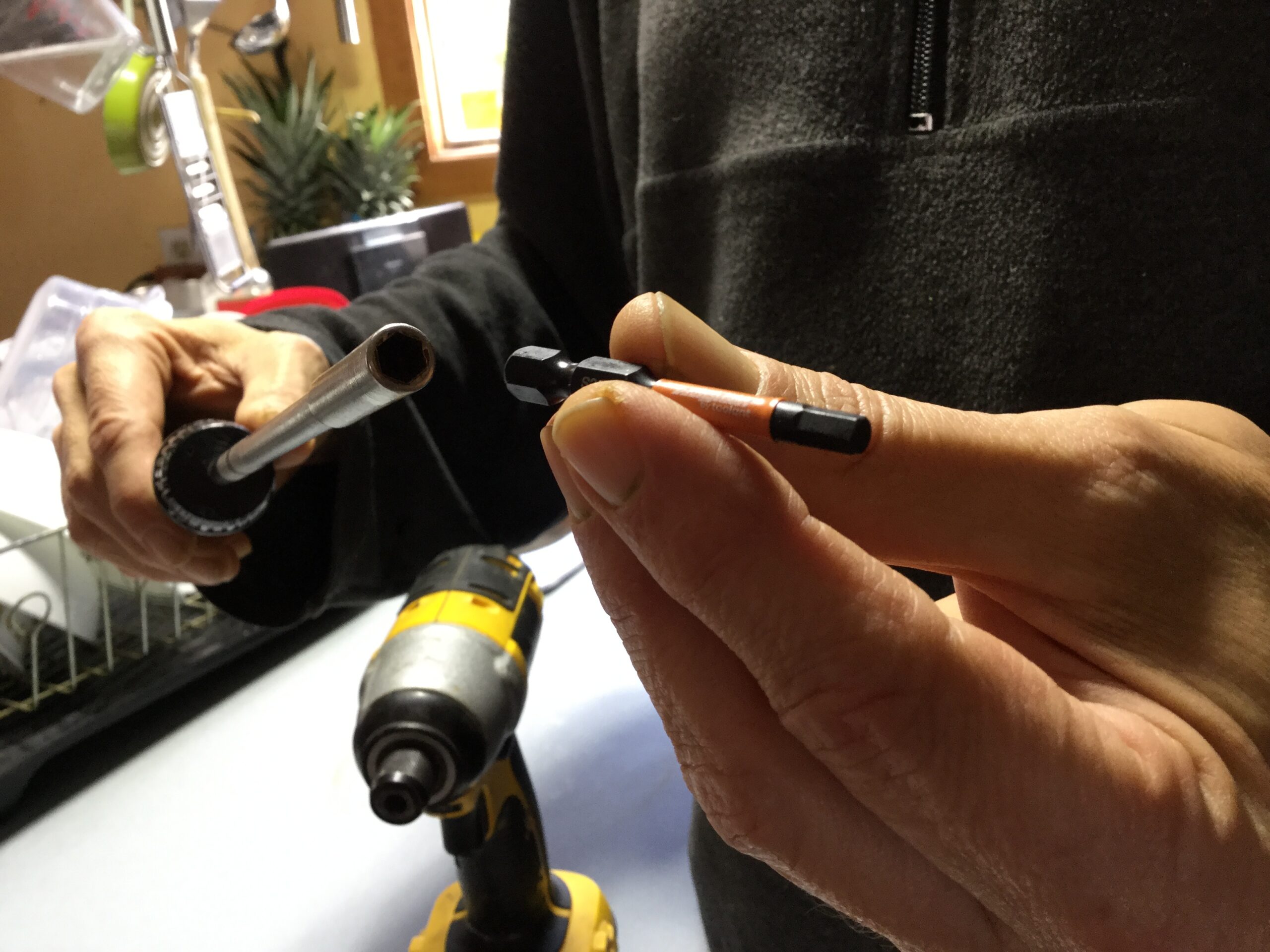
These new hex head allen wrench bits are miles ahead of the old L shaped wrenches.
They slide right into any impact driver with a 1/4 inch quick connect or the same size hand driver.
A nice bonus is these are magnetic to help you hold whatever bolt or screw you’re working with.
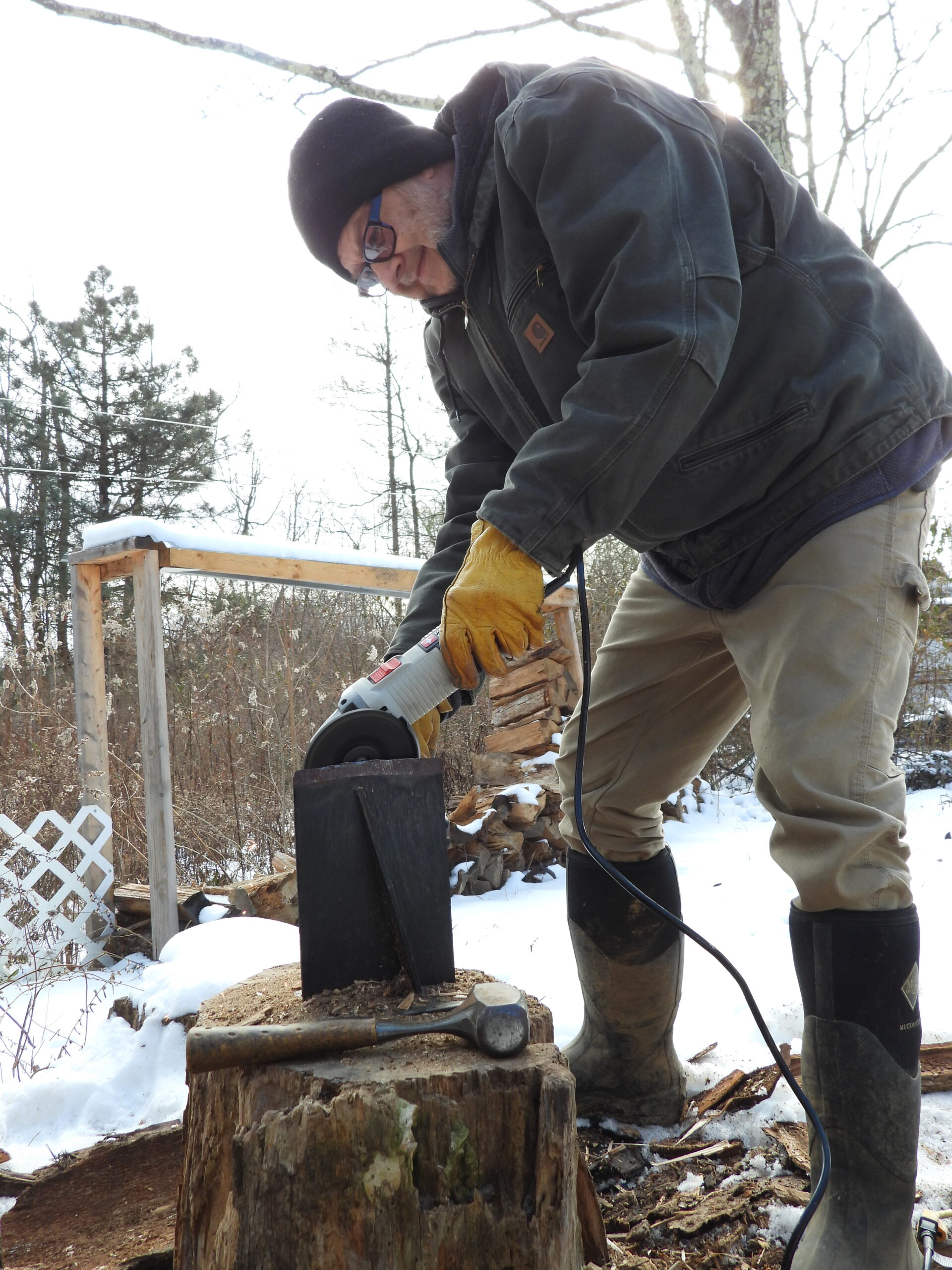
We’ve had our Kindling Splitter for over 2 years now and it continues to make kindling safe and easy.
It seems to help to cut your pieces a few inches higher than the height of the splitter.
Cutting shorter pieces runs the risk of the hammer contacting the splitter and dulling the edge.
A few minutes with an angle grinder is all it takes to bring it back to its full cutting potential.
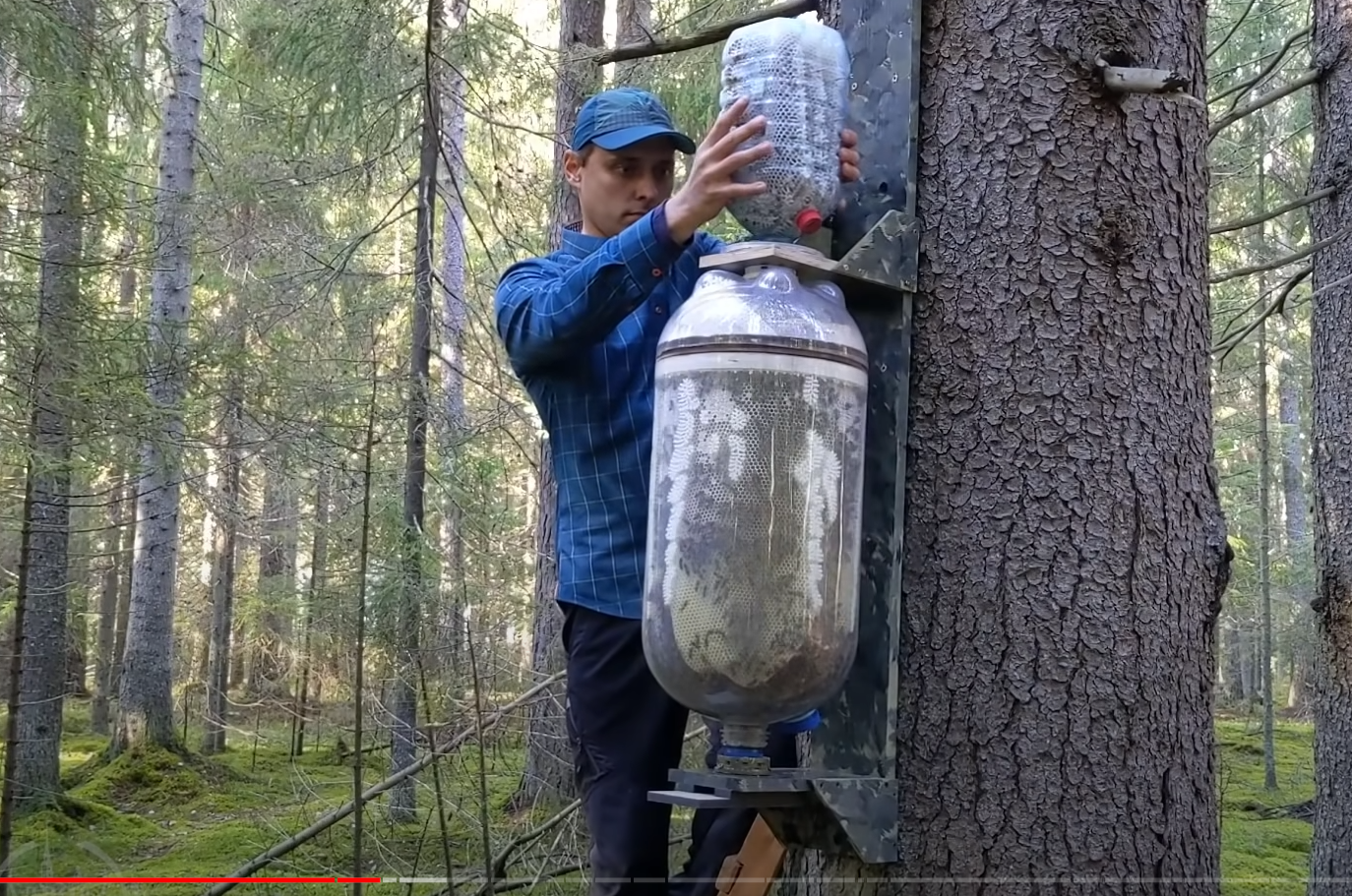
Advoko MAKES on You tube has been experimenting with using plastic bottles to farm bees.
It seems to be cheaper and easier. That big bottle is a European recycled beer keg.
He has even configured one of his hives to make the top bottle reachable from inside his house!
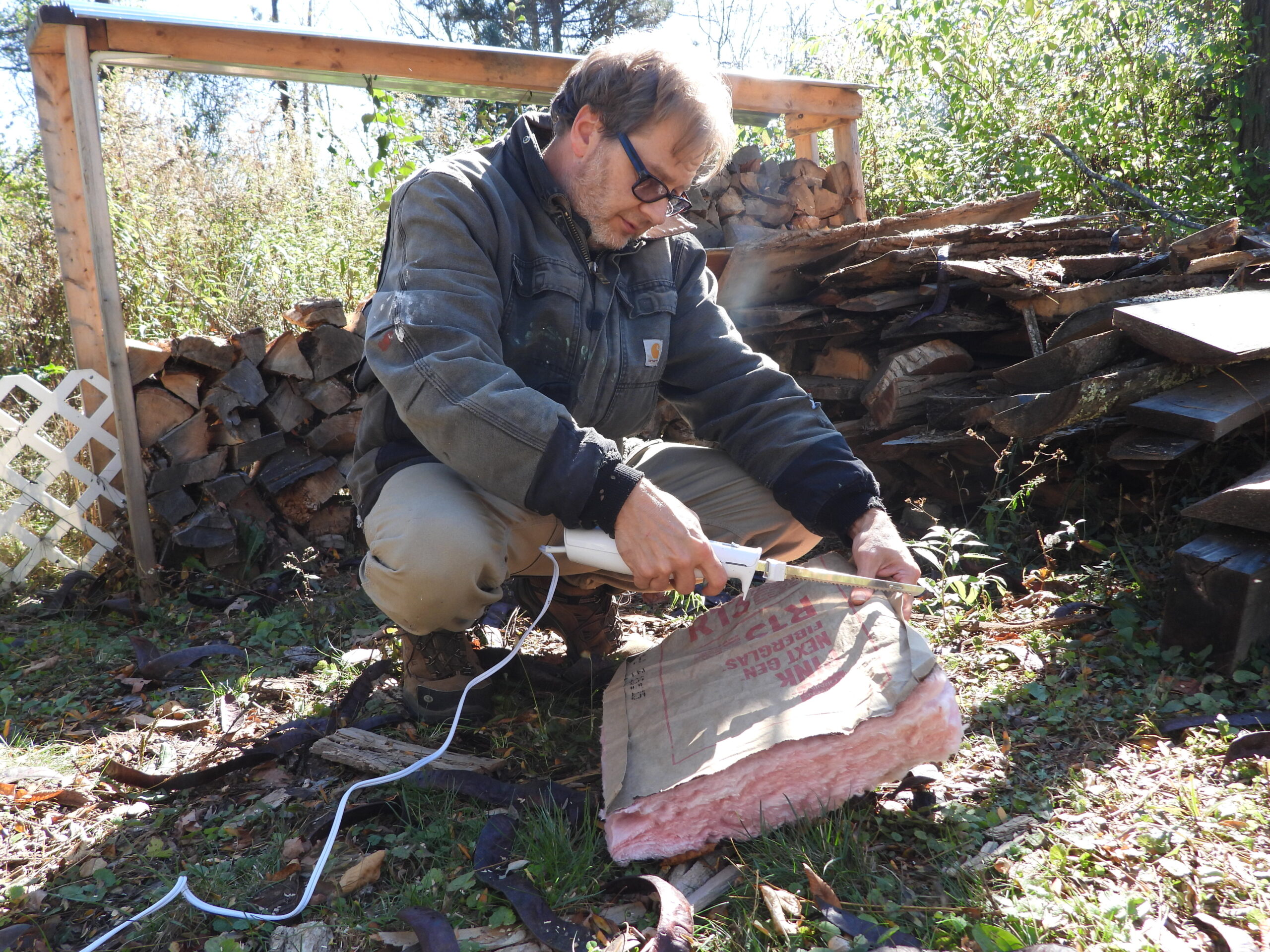
I learned the hard way during some recent insulation work that a pair of scissors is painful.
The standard method of using a utility knife on a hard surface is good if you have plenty of room.
An electric meat carving knife is much better and quicker. It’s light enough to use with one hand while you use the other hand to hold on to the insulation.
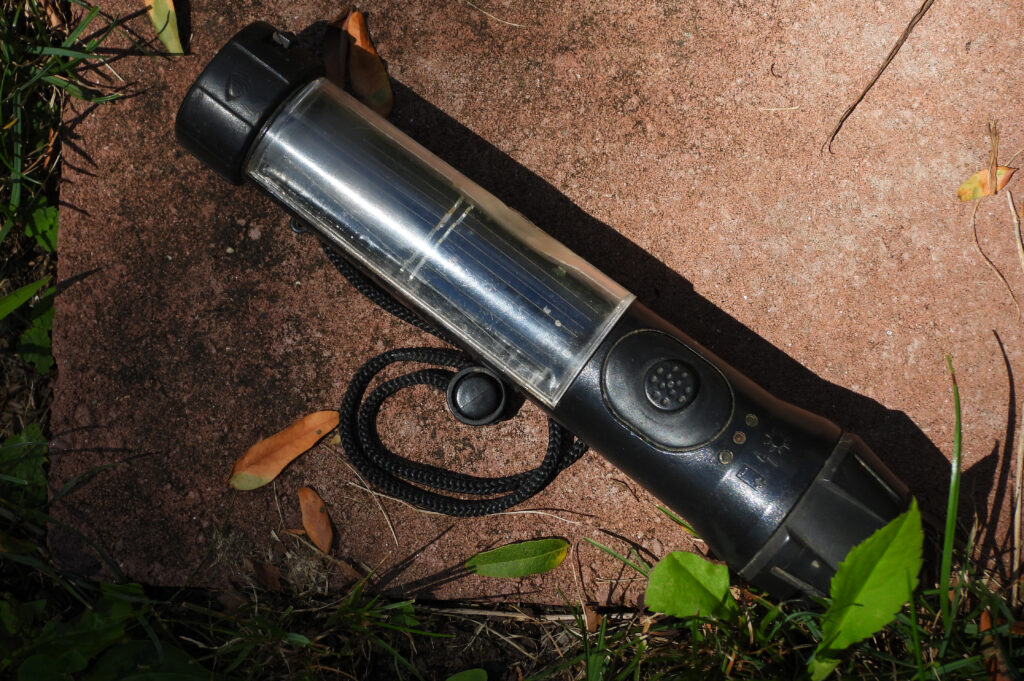
In 2012, Mark and I invested in two solar flashlights for camping and power outages. They lasted an amazingly long time, but eventually the batteries stopped holding a charge. Rather than crack open the plastic to try to replace the batteries, I decided to see how much a decade has improved the technology.
After poking around on Amazon for a while, I settled on the TOMETC Solar Power Bank. It had a lot of good reviews, a large battery capacity, and a large solar panel…all for under twenty bucks. Sounds like a winner, right?
Wrong! I’m guessing something about the frosting they put over the solar panel to waterproof it blocks light. Whatever the reason, two full days in the sun resulted in absolutely no change in the charge level of the battery. When I dug deeper into the reviews, it turned out I wasn’t the only one who had this problem, so it wasn’t a defective unit.
Meanwhile, the flashlight is way too bright for what I usually use it for (reading in my tent). An overpowered light drains the battery faster than it should. I estimate I got about eight hours of use out of a full charge. To cut a long story short, I sent this one back.
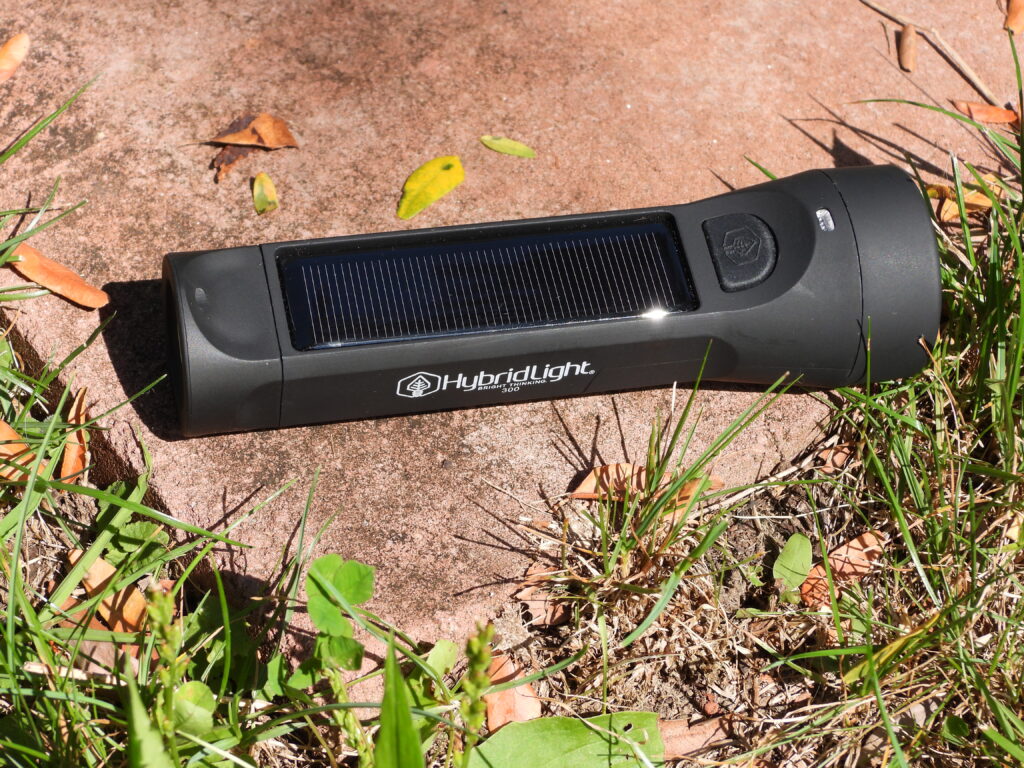
Next up, I decided to return to the model that served us so well for eleven years. Unfortunately, the original flashlight had been discontinued, but HybridLight has a replacement available. Their offering doesn’t look as flashy as some of the alternatives and costs $10 more than the competition. But they wisely included the option of a low-light setting so I won’t drain the battery bank too quickly while reading and their longevity track record speaks for itself.
How did the actual flashlight do in the field? I wasn’t as thrilled as I’d hoped to be. On low, I estimate I’ll get about twelve hours of use out of a full charge, far less than the fifty hours they promise but still better than the competition. Meanwhile, a day in the sun did little to top the battery up.
I’m starting to suspect that my goal — being able to set a flashlight in the sun for the day then read for a couple of hours at night using that solar energy — is a pipe dream. But perhaps I just haven’t found the right solar flashlight yet. Have you tried a different model with better results?
(For the record, I decided to keep the HybridLight flashlight. It works well charged from the wall and will presumably help us through power outages if left in the sun to trickle charge when grid electricity is available.)
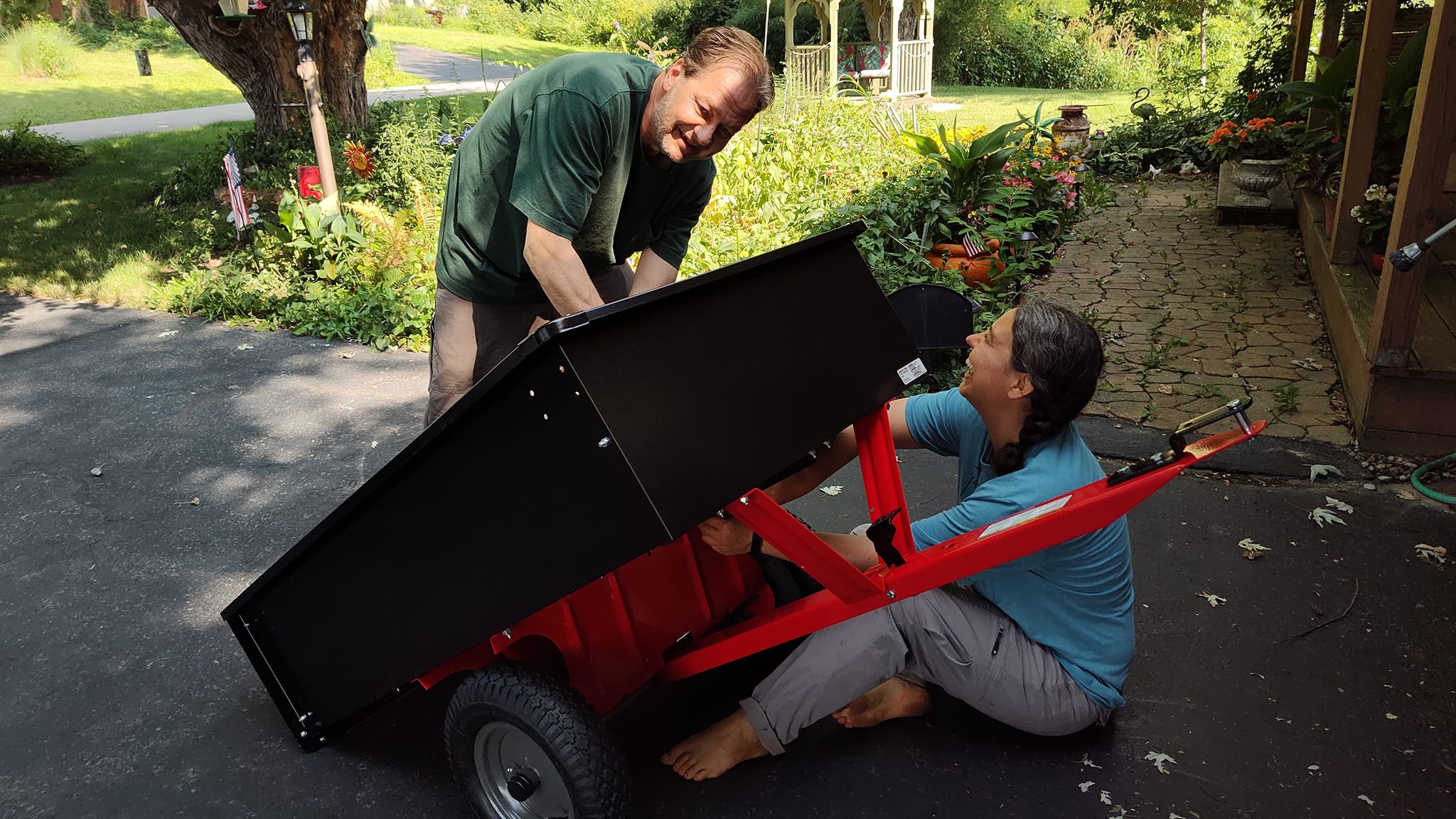
Anna and I assembled a Craftsman steel dump cart while visiting my Mom recently.
The book says it takes 45 minutes to put together but we needed nearly 2 hours.
It’s a solid cart that can handle 750 pounds. Lowes sells it for 350 but Menards has a Yardworks version that is a little over 200.
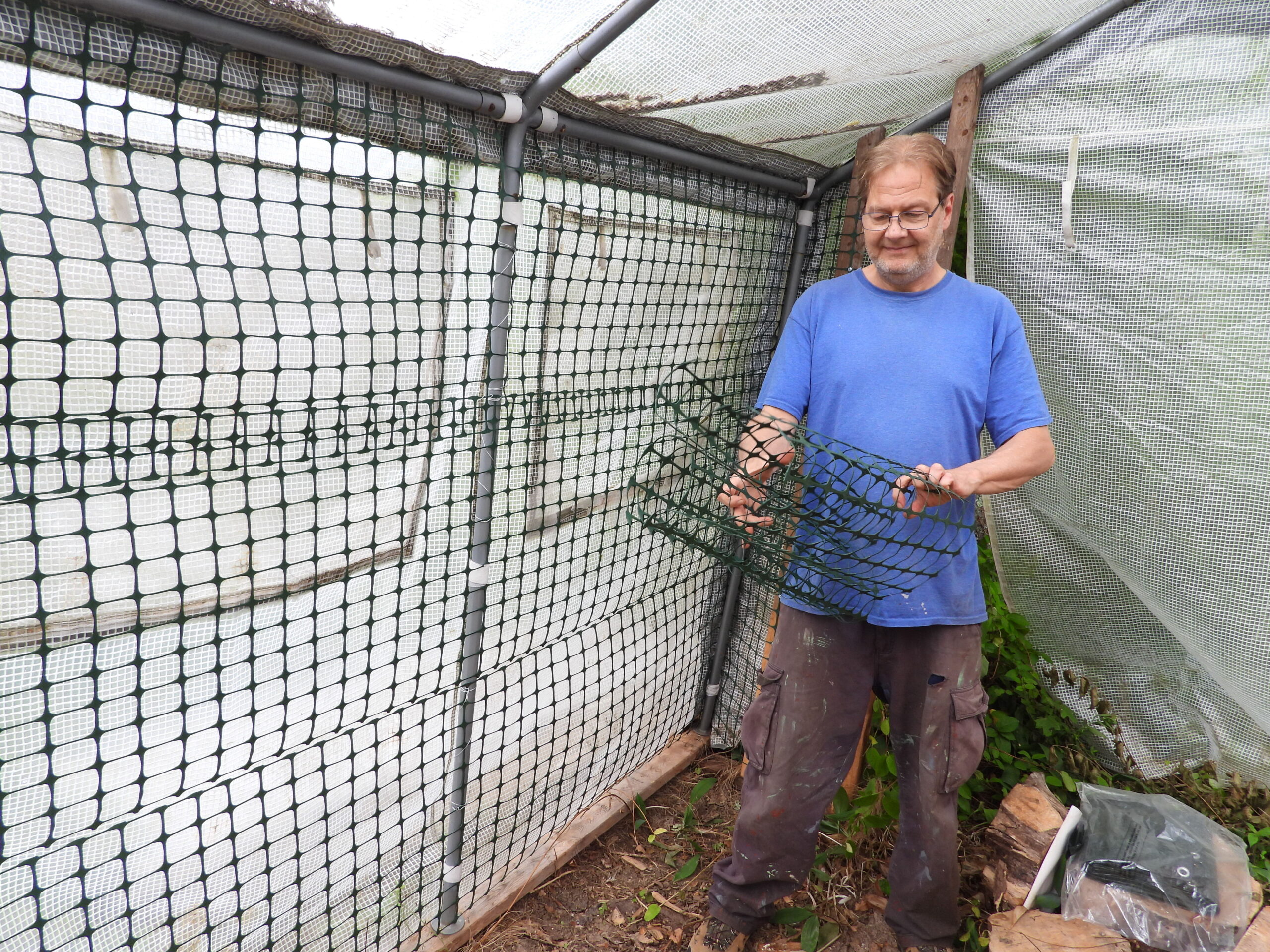
We used some green plastic mesh to add some walls to our woodshed structure.
The Tenax brand of garden fence material has been the mesh I prefer because it’s cheap and easy.
Next step is to get some firewood cut up and stacked for the upcoming Winter.
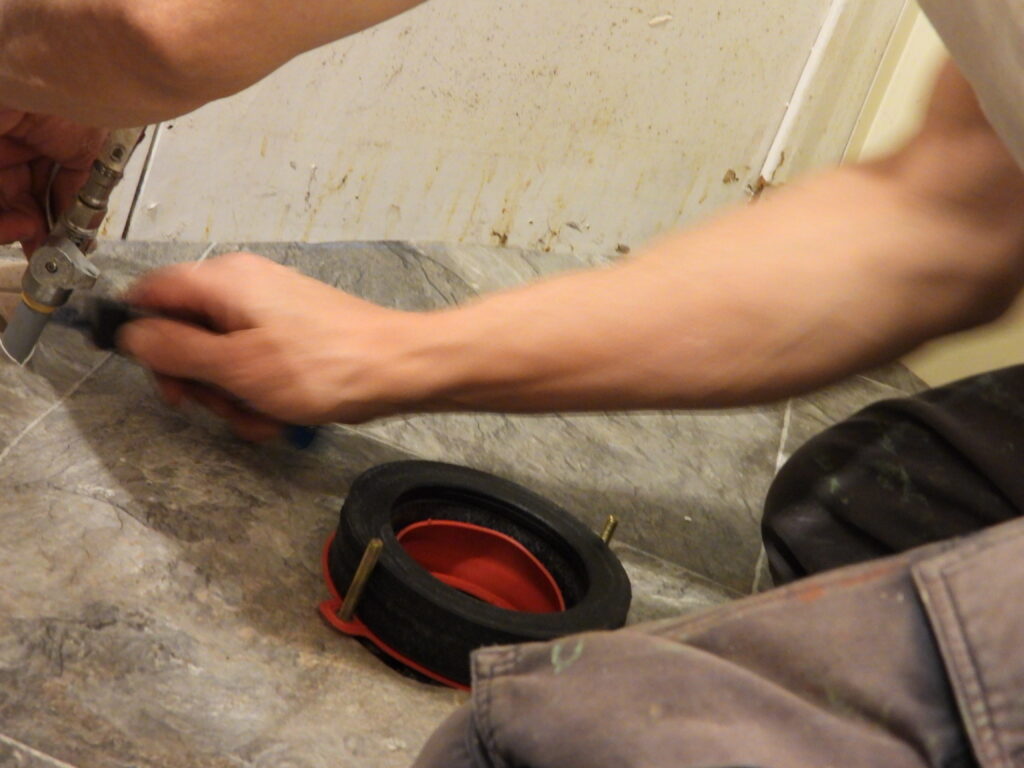 I’ve been putting off a toilet replacement because the part where you lower the toilet onto a wax seal is just above my skill level.
I’ve been putting off a toilet replacement because the part where you lower the toilet onto a wax seal is just above my skill level.
The new style universal gasket is made of rubber and fits most size variations. If when you lower the toilet it does not fit on center you can try it again without destroying the gasket seal.
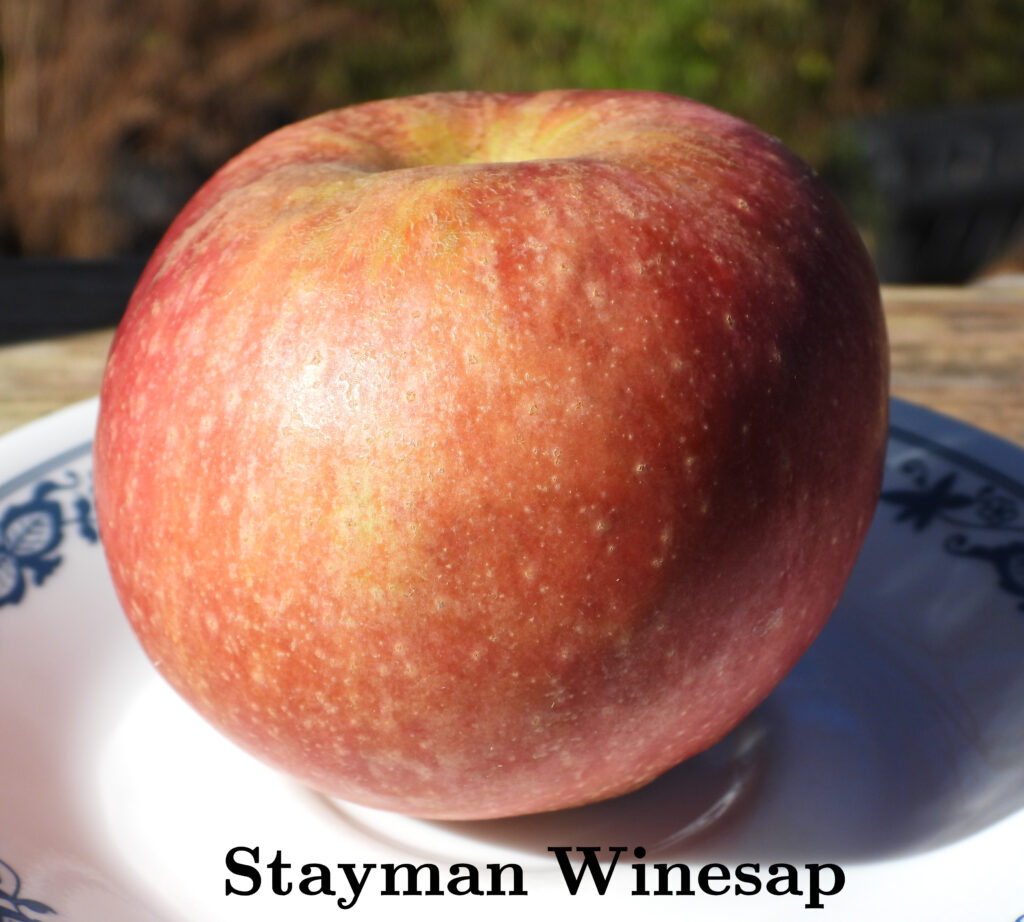
Our local farmer’s market has the most apple varieties I’ve ever seen, all harvested close to Athens, Ohio. As a result, I’ve been running taste tests over the last few years, picking new (and old) favorites.
Before I go on, I should tell you what I like in an apple — a good blend of sweet and tart, preferably also crisp (although taste is more important to me than texture). You won’t find apples like these at the grocery store even if they share these names. Head to your own farmer’s market, fruit stand, or U-pick orchard to find the tastiest treats.
Okay, which varieties won the prize? The first one is the old standby I’ve been enjoying since I was a kid — Stayman Winesap. When caught at its peak, this is an A+ apple. If harvested a bit too early, it tends toward sour and might be more of a B+. (Look for the bright red skin as a visual clue of sweetness.) Later in the winter, Winesaps turn mushy and are more of a B.
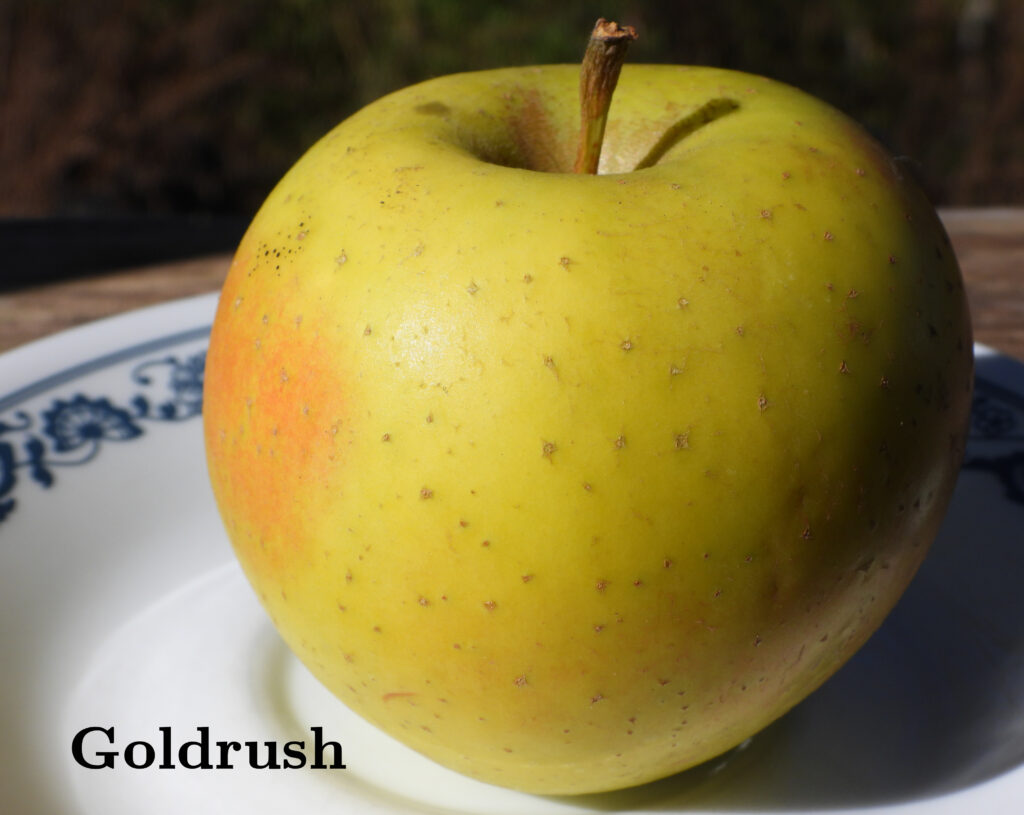
Goldrush was a new one on me, but has become my go-to apple in the winter. It’s a little sweeter than Winesap but still has some tartness and a good flavor complexity. Plus, it stays crisp for quite a long time. The tastiest Goldrush apples tend to have a bit of a red blush, but even the solid yellow ones are an A to A+.
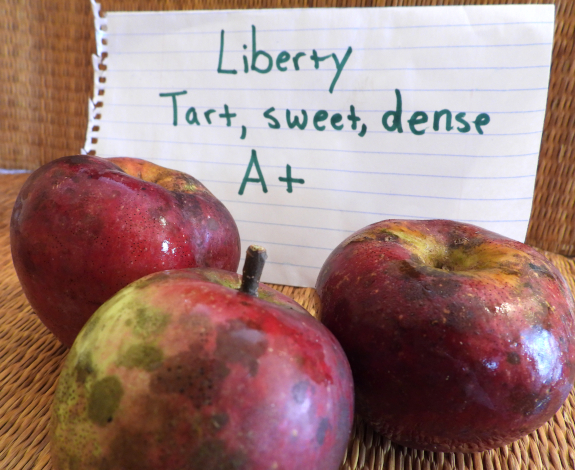
I’ve yet to find Liberty appples being grown by a traditional farmer, but homesteaders often plant them because they’ll bear fruit without any chemical sprays. They’re a bit denser than the others but boast a flavor explosion that definitely beats the pants off any other apple I’ve eaten. That said, I can’t be sure whether the difference is the variety or the cultivation method. Beyond-organic techniques lead to lots of micronutrients in the soil which in turn tend to turn flavors up extra high. Regardless, this is a solid A+ apple, maybe an A++.
I can’t wait to hear the results of your own taste tests. And if you end up with way too many apples after buying up every variety at the local farmer’s market, definitely try making a vat of skin-on applesauce.